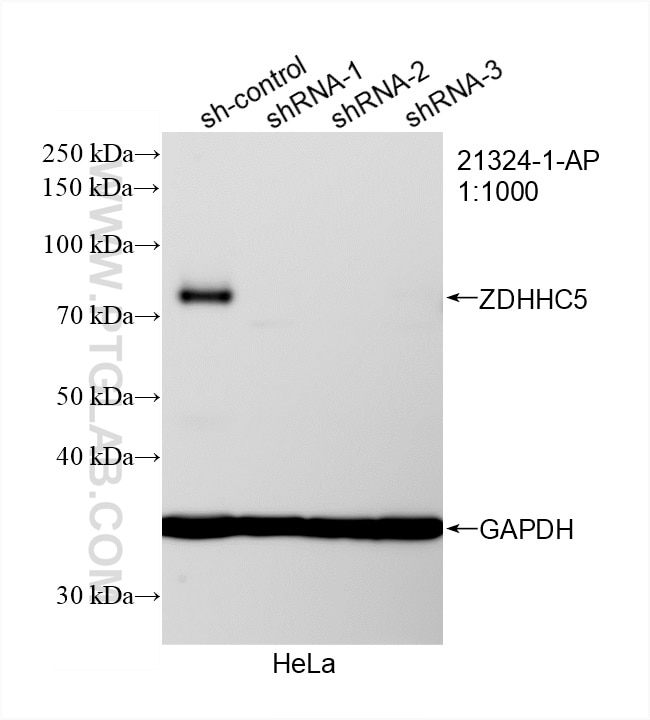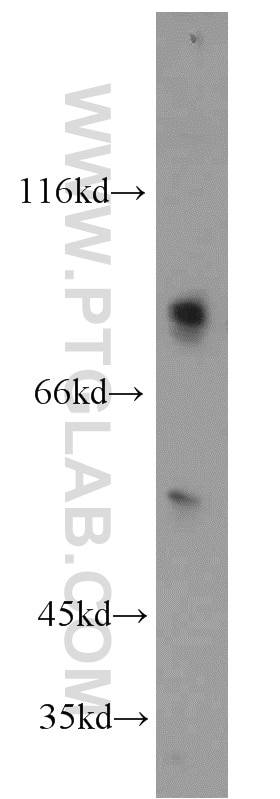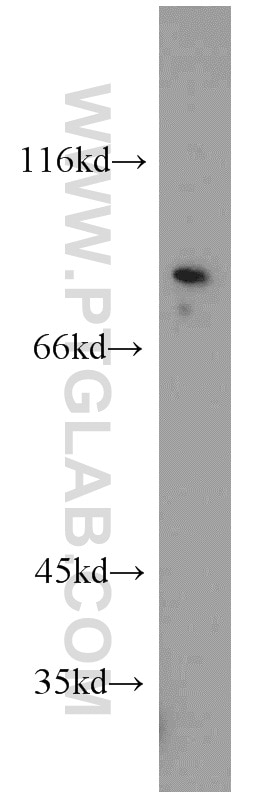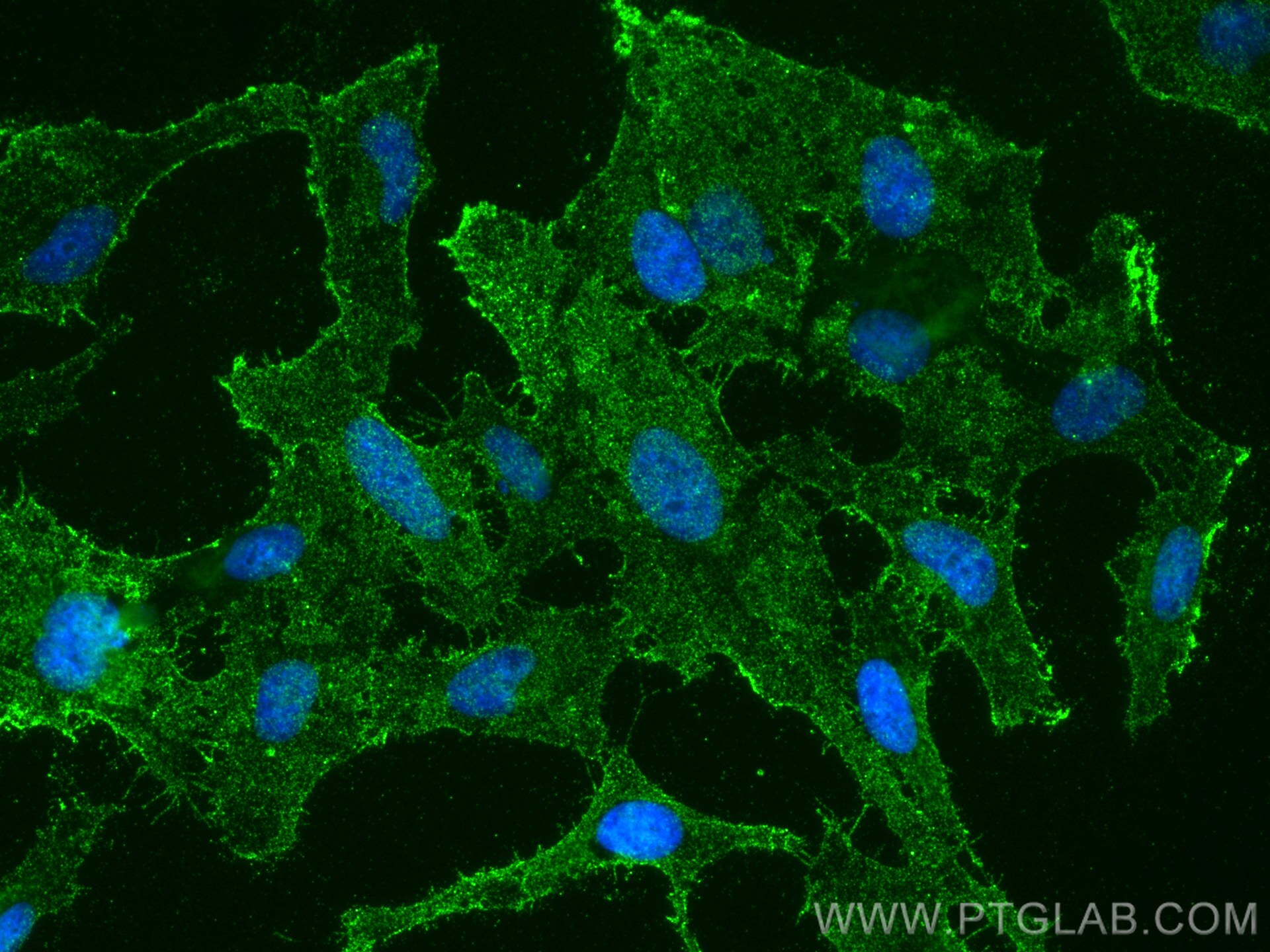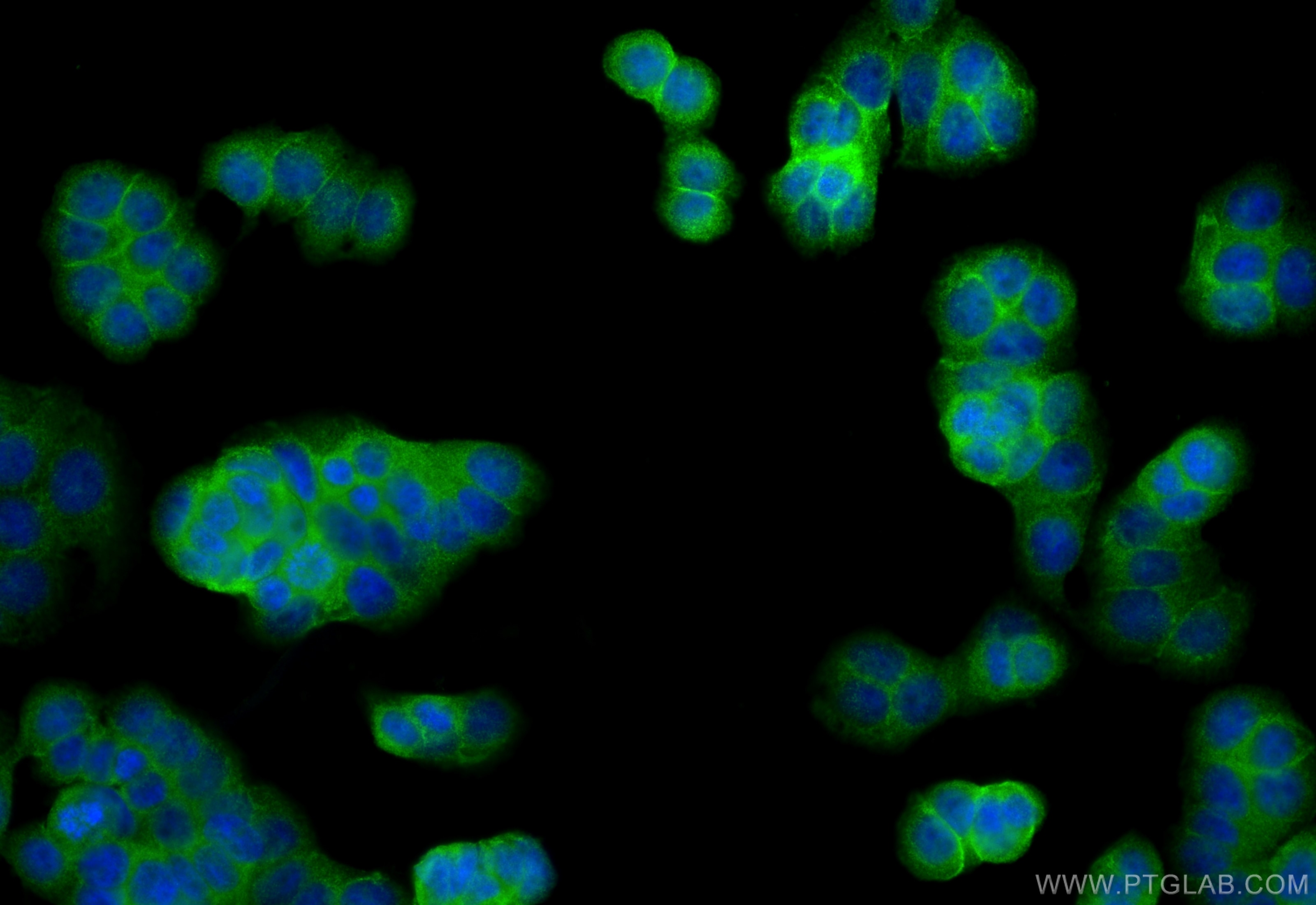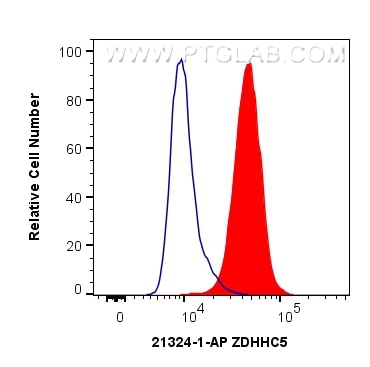Tested Applications
| Positive WB detected in | mouse kidney tissue, HEK-293 cells, HeLa cells, mouse brain tissue |
| Positive IP detected in | HEK-293 cells |
| Positive IF/ICC detected in | HeLa cells, HT-29 cells |
| Positive FC (Intra) detected in | HeLa cells |
Recommended dilution
| Application | Dilution |
|---|---|
| Western Blot (WB) | WB : 1:500-1:2000 |
| Immunoprecipitation (IP) | IP : 0.5-4.0 ug for 1.0-3.0 mg of total protein lysate |
| Immunofluorescence (IF)/ICC | IF/ICC : 1:200-1:800 |
| Flow Cytometry (FC) (INTRA) | FC (INTRA) : 0.40 ug per 10^6 cells in a 100 µl suspension |
| It is recommended that this reagent should be titrated in each testing system to obtain optimal results. | |
| Sample-dependent, Check data in validation data gallery. | |
Published Applications
| KD/KO | See 4 publications below |
| WB | See 20 publications below |
| IF | See 3 publications below |
| IP | See 3 publications below |
| CoIP | See 2 publications below |
Product Information
21324-1-AP targets ZDHHC5 in WB, IF/ICC, FC (Intra), IP, CoIP, ELISA applications and shows reactivity with human, mouse, rat samples.
| Tested Reactivity | human, mouse, rat |
| Cited Reactivity | human, mouse, rat |
| Host / Isotype | Rabbit / IgG |
| Class | Polyclonal |
| Type | Antibody |
| Immunogen |
CatNo: Ag14891 Product name: Recombinant human ZDHHC5 protein Source: e coli.-derived, PET28a Tag: 6*His Domain: 313-662 aa of BC026967 Sequence: AMPHSSSAKLSRGDSLKEPTSIAESSRHPSYRSEPSLEPESFRSPTFGKSFHFDPLSSGSRSSSLKSAQGTGFELGQLQSIRSEGTTSTSYKSLANQTRNGSLSYDSLLTPSDSPDFESVQAGPEPDPPLGYTSPFLSARLAQQREAERHPRLVPTGPTHREPSPVRYDNLSRHIVASLQEREKLLRQSPPLPGREEEPGLGDSGIQSTPGSGHAPRTSSSSDDSKRSPLGKTPLGRPAVPRFGKPDGLRGRGVGSPEPGPTAPYLGRSMSYSSQKAQPGVSETEEVALQPLLTPKDEVQLKTTYSKSNGQPKSLGSASPGPGQPPLSSPTRGGVKKVSGVGGTTYEISV Predict reactive species |
| Full Name | zinc finger, DHHC-type containing 5 |
| Calculated Molecular Weight | 715 aa, 78 kDa |
| Observed Molecular Weight | 77 kDa |
| GenBank Accession Number | BC026967 |
| Gene Symbol | ZDHHC5 |
| Gene ID (NCBI) | 25921 |
| RRID | AB_10732816 |
| Conjugate | Unconjugated |
| Form | Liquid |
| Purification Method | Antigen affinity purification |
| UNIPROT ID | Q9C0B5 |
| Storage Buffer | PBS with 0.02% sodium azide and 50% glycerol, pH 7.3. |
| Storage Conditions | Store at -20°C. Stable for one year after shipment. Aliquoting is unnecessary for -20oC storage. 20ul sizes contain 0.1% BSA. |
Background Information
The gene encoding zinc finger DHHC-type-containing (ZDHHC)5 is located in a region of chromosome 11q12.1 associated with a high rate of chromosomal translocation and variation, which has been linked to the development of various cancers. ZDHHC5 stimulates the proliferation and anchorage-dependent and -independent colony formation of non-small cell lung cancer cell lines, and was found to be required in a subset of these cells for establishment of tumor xenografts in mice. ZDHHC5 is highly expressed in a variety of embryonic cells including neural progenitor cells, but not in most adult tissues.
Protocols
| Product Specific Protocols | |
|---|---|
| IF protocol for ZDHHC5 antibody 21324-1-AP | Download protocol |
| IP protocol for ZDHHC5 antibody 21324-1-AP | Download protocol |
| WB protocol for ZDHHC5 antibody 21324-1-AP | Download protocol |
| Standard Protocols | |
|---|---|
| Click here to view our Standard Protocols |
Publications
| Species | Application | Title |
|---|---|---|
Cell Death Differ Palmitoylation restricts SQSTM1/p62-mediated autophagic degradation of NOD2 to modulate inflammation.
| ||
Sci Rep DHHC5-mediated palmitoylation of S1P receptor subtype 1 determines G-protein coupling.
| ||
Mol Neurobiol AKAP150 and its Palmitoylation Contributed to Pain Hypersensitivity Via Facilitating Synaptic Incorporation of GluA1-Containing AMPA Receptor in Spinal Dorsal Horn. | ||
J Virol Palmitoylation enhances the stability of porcine epidemic diarrhea virus spike protein by antagonizing its degradation via chaperone-mediated autophagy to facilitate viral proliferation |

